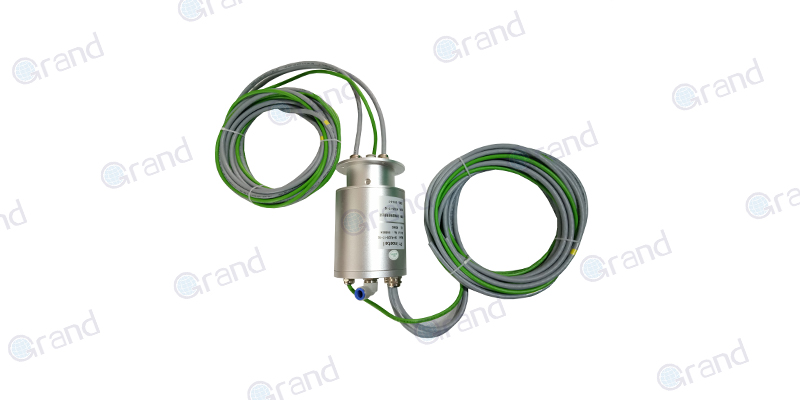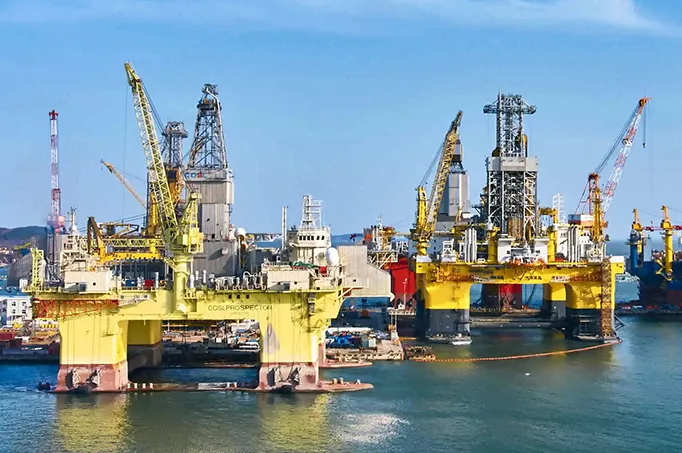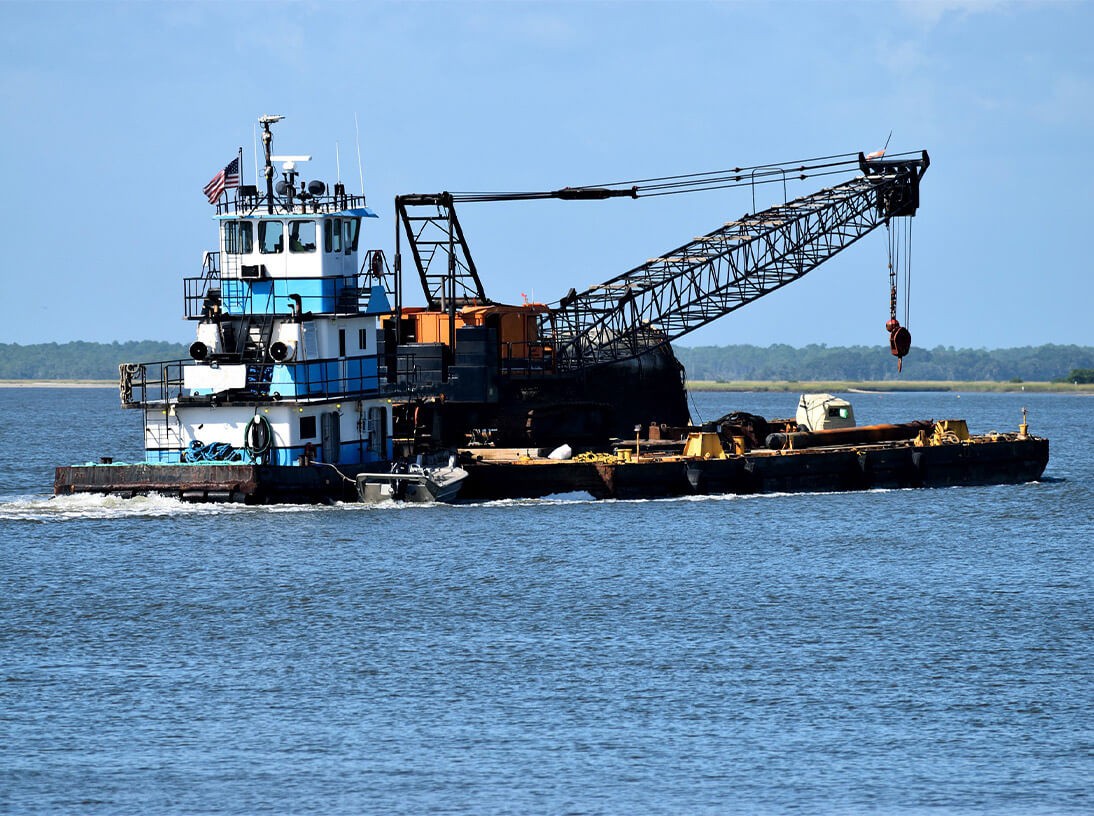This article provides a deep exploration into the world of ROV (Remotely Operated Vehicle) slip rings, detailing their design, manufacturing processes, types, and applications, and highlighting the innovative future trends.
Introduction to ROV Slip Rings
Definition and Functionality of ROV Slip Rings
Remotely Operated Vehicles (ROVs) are a critical tool in underwater exploration, maintenance, and scientific research. They operate in extremely challenging environments, and to ensure their smooth and reliable function, specialized components are necessary. One such essential component is the ROV slip ring.
An ROV slip ring is a rotary electrical connector that allows the transfer of power, data, and signals between the stationary and rotating components of the ROV system. They are designed to maintain electrical continuity even as the parts of the ROV move, rotate, or change orientation underwater – ensuring a seamless exchange of information and an uninterrupted power supply.
Significance and Role of ROV Slip Rings within the Broader Context of ROV Operation
The ability to transfer power and data is crucial for ROV functionality, as it enables smooth navigation, real-time communication, and accurate data collection. In the context of ROV operations, slip rings play a vital role in integrating various subsystems that work together to achieve the desired outcome.
For instance, tether management systems, which control the cable attaching the ROV to the control console, often rely on slip rings to transmit signals and power between the moving parts. Similarly, high-definition video cameras and sensors that collect information require slip rings to facilitate real-time data transfer.
These applications highlight the importance of ROV slip rings in bridging the gap between the different components of a complex underwater system. By selecting and implementing the appropriate slip ring technology, operators can ensure efficient and uninterrupted ROV performance, leading to enhanced operational effectiveness and valuable data collection in a vast range of underwater tasks and missions.

Design and Manufacturing of ROV Slip Rings
In-depth Discussion of the Design Considerations for ROV Slip Rings
The design process of ROV slip rings involves numerous significant considerations, as they have to endure settings that are among the most challenging on the planet. They must accommodate a broad range of temperatures, resist pressure that can reach thousands of pounds per square inch, and withstand the corrosive effects of seawater.
With these factors in mind, the design considerations for ROV slip rings include ensuring sufficient insulation to prevent electrical leakage, meeting dimensional requirements, and optimizing the number of circuits. Furthermore, designers have to carefully consider the type of data and power transmission needed for the particular ROV application. Whether it’s signal transmission or high-definition video data transfer, each application type necessitates specific design attributes.
Other critical design elements include rotational speed, life expectancy, and maintenance requirements. All these considerations should culminate in a robust, reliable, and efficient ROV slip ring capable of supporting the operational needs of the underwater vehicle.
Examination of Manufacturing Processes and Commonly Used Materials
Manufacturing ROV slip rings is a process that requires precision, top-notch quality control, and the right materials to produce a reliable and enduring product.
Given the extreme conditions in, which ROV slip rings operate, the chosen materials need to exhibit excellent properties such as high tensile strength, corrosion resistance, and good electric conductivity. Commonly used materials include stainless steel, bronze, and specific types of plastic, all offering excellent durability and resistance against seawater corrosion.
To form the conductive pathways, precious metals like gold or silver are often used due to their low electrical resistance, excellent conductivity, and high resistance to surface wear and corrosion.
The actual manufacturing process of ROV slip rings involves precision engineering techniques to ensure high quality and dependability. This might include processes such as CNC machining for the mechanical parts, and meticulous assembly to ensure that electrical connections are accurate, secure, and robust.
Finally, rigorous testing processes are incorporated during and after manufacturing to confirm the operational reliability of the slip ring. These may include tests for rotation performance, electrical properties, resistance to harsh environments, and long-term reliability.
Together, these design considerations and manufacturing processes create ROV slip rings that can survive and perform in the demanding underwater environment, allowing ROVs to carry out missions effectively.
Types and Categories of ROV Slip Rings
ROV slip rings come in various categories, each fulfilling specific operational requirements. The primary types based on design and use are Electrical, Fiber Optic, and Hybrid ROV slip rings. Each type has unique features and benefits tailored to its specific function within an ROV system.
Electrical ROV Slip Rings
Electrical slip rings for ROVs are engineered to transmit electrical power and signals between the rotating and stationary components of an ROV system, powering the ROV itself and supporting the operation of various onboard equipment. They play a vital role in enabling ROV movement, actuating robotic arms, and maintaining ongoing operations.
These slip rings are designed with different circuits to handle diverse currents and voltages, and their mechanical structure is planned to maintain a constant electrical connection, regardless of the rotation angle.
Fiber Optic ROV Slip Rings
With the advent and progression of optical technology, fiber optic ROV slip rings are gaining popularity for data transmission. They cater specifically to the need for high-bandwidth data transfer and support high-definition real-time video feeds, which is essential in ROV operations.
Fiber optic slip rings, often known as FORJs (Fiber Optic Rotary Joints), use light to transmit data, offering high-speed transfers without electromagnetic interference. They are resilient to wear and tear, ensuring a longer service life, and they usually incorporate single or multi-mode fiber for data transfer.
Hybrid ROV Slip Rings
Recognizing the need for both power transfer and high-speed data exchange in a single unit, manufacturers offer hybrid slip rings. These are essentially a combination of electrical and fiber optic slip rings and can transmit electrical power with simultaneous high-speed data.
Hybrid ROV slip rings are versatile and efficient, reducing the space needed for equipment integration, and they’re ideal for advanced ROVs that require effective power supply and real-time, large quantities of data transfer.
In summary, the type of ROV slip rings selected depends on the specific operational requirements of the ROV, considering factors such as the power needs, data transfer requirements, and the operational environment.
Key Functional Aspects of ROV Slip Rings
ROV slip rings play a fundamental role in enabling the operation and success of remotely operated vehicles underwater.
Core Functions of ROV Slip Rings
There are two primary functions of ROV slip rings: transmission of power and transmission of signals and data.
- Power Transmission: ROV slip rings conduct electrical current from the surface vessel to the ROV, acting as a conduit for power. This continual flow of electricity allows the ROV to function, powering its motor, lights, instruments, and tools.
- Signal and Data Transmission: In addition to electricity, ROV slip rings also conduct signal information. These signals could be command information that guides and controls the movement and operation of the ROV, such as its direction, speed, and depth. Moreover, they also facilitate the transfer of data from sensors and cameras on the ROV back to the control panel.
Contribution to the Larger ROV System
ROV slip rings are not standalone devices; rather, they operate within the larger context of an ROV system. They’re central to integrating various subsystems and ensuring efficient operation.
The slip rings ensure seamless power transmission for multiple subsystems, enabling components such as cameras, sonars, and robotic arms to function effectively. Moreover, they facilitate real-time data transmission, essential in operations like underwater reconnaissance, salvage operations, pipeline inspection, or scientific exploration.
In summary, the key roles of signal transmission and power supply that the slip ring performs make them an indispensable component. They significantly contribute to the larger ROV system, allowing it to function effectively in challenging underwater scenarios.
ROV Slip Rings Technical Parameters and Specifications
Understanding the technical specifications of ROV slip rings is essential to ensure optimal performance and integration into the ROV system. Here is a comprehensive analysis of common technical parameters and their correlation to performance, efficiency, and reliability.
Comprehensive Analysis of Common Technical Parameters
- Current and voltage: These parameters are crucial as they define the slip ring’s power transmission capacity. They should align with the power requirements of the ROV system to ensure smooth operations.
- Rotational Speed: This determines the rotational speed of the slip ring. Depending on the application, faster or slower rotational speeds may be required.
- Size and Weight: The size and weight of the slip ring affect the overall dimensions and weight of the ROV. They directly impact the operational efficiency of the ROV, especially when it comes to maneuverability and energy consumption.
Correlation of these Parameters to Performance, Efficiency, and Reliability
All these technical parameters directly affect the performance, reliability, and efficiency of the ROV slip ring and, by extension, the overall ROV system.
- Performance: High current and voltage transmission capabilities mean that the slip ring can effectively power robust ROV systems. However, this must be balanced with appropriate design measures to prevent overheating. The rotational speed of the slip ring can also impact the response times of the ROV system.
- Efficiency: The size and weight of the slip ring can significantly impact the energy consumption and maneuverability of the ROV. A small, lightweight slip ring, for example, can help in making the ROV more energy-efficient and agile.
- Reliability: A well-designed slip ring that meets the necessary parameters is key to the reliability of ROV operations. This means ensuring the materials, design, and manufacturing process produce a product capable of continuous operation in harsh underwater conditions.
In conclusion, the technical parameters and specifications directly link to the performance, efficiency, and reliability of ROV slip rings. For optimum ROV functionality, it’s crucial to correctly match these parameters with the operational requirements of the respective ROV system. The end goal is to achieve a balance that ensures sustained and successful ROV operations.
Reliability and Durability of ROV Slip Rings
The reliability and durability of ROV slip rings are key considerations during both the selection and design phases. A slip ring that can’t meet the challenges of harsh underwater conditions wouldn’t be effective, no matter how well it performs in less demanding situations.
Expected Lifespan and Durability Under Different Conditions
ROV slip rings are designed for durability, built to withstand demanding conditions and ensure a prolonged operational life.
The expected lifespan varies based on the specific model and use but is generally several years even in challenging environments. Contributing factors to a long lifespan often include superior materials, advanced engineering techniques, effective insulation, and robust protective measures.
The durability is heavily reliant on how well the slip ring stands up against different conditions. This includes withstanding substantial pressure at great depths, enduring variations in temperature, and resisting the constant corrosion caused by prolonged exposure to seawater.
Protective Features: Corrosion Resistance, Water Resistance, and Pressure Resilience
Protective features are paramount in promoting the longevity and dependability of ROV slip rings. Comprehensive defense measures enhance the capacity of these components to endure the rigors of their operational environments.
- Corrosion Resistance: Due to constant exposure to seawater, ROV slip rings are built with materials that resist corrosion. Materials such as stainless steel and bronze are often used, and precious metals like gold or silver may be used for electrical contacts due to their resistance to corrosion.
- Water Resistance: Given that ROVs operate underwater, the slip rings also need to be designed to prevent water ingress. This can include specific design features like hermetic sealing and the use of water-resistant materials.
- Pressure Resilience: ROVs often operate at great depths where pressure can be extremely high. As such, the mechanical structure of the ROV slip rings is designed to withstand these pressures without risk of deformation or failure.
By ensuring these protective features are in place, ROV slip rings can be both reliable and durable, capable of extended operation even in challenging conditions. This directly contributes to the longevity of the ROV system, driving successful underwater missions.
Operational Environment of ROV Slip Rings
The operational environment of ROV slip rings is primarily underwater – a challenging domain marked by increased pressure, constant exposure to saltwater, and various temperature conditions.
Exploration of the Challenging Underwater Environments
ROVs operate in some of the harshest conditions on Earth. Underwater environments present unique and significant challenges, such as:
- Pressure: Deep underwater, the pressure significantly increases. Every 10 meters in depth represents an increase of approximately one atmosphere in pressure.
- Corrosive Elements: Saltwater is highly corrosive, which escalates the wear and tear on materials.
- Temperature: Temperature variations underwater, influenced by depth and environmental factors, can impact the operational state of equipment.
All these conditions can significantly impact the operation and lifespan of ROV slip rings if not properly addressed.
ROV Slip Rings Designed for Underwater Environments
To counter these challenges, ROV slip rings are designed with specific measures:
- Pressure Resilience: Manufacturers design slip rings to withstand high pressure by using robust materials and ensuring that seals can withstand the pressures the ROV will encounter.
- Corrosion Resistance: The materials used in constructing ROV slip rings are often chosen for their corrosion resistance. Stainless steel, bronze, and other corrosion-resistant materials form the housing, and precious metals like gold are often used for contact surfaces.
- Temperature Variations: ROV slip rings must operate effectively within a wide range of temperatures. Design considerations often include allowances for thermal expansion and contraction of materials.
By acknowledging and addressing these environmental factors, manufacturers can effectively increase the operational lifetime, reliability, and effectiveness of ROV slip rings in underwater conditions.
ROV Slip Rings Unique Applications and Case Studies
ROV slip rings find application in a wide range of sectors and operations, showcasing their unique adaptability and indispensability in various environments. This section will detail a few applications and present real-world case studies to fully appreciate the capabilities of these components.
Various Applications of ROV Slip Rings
Some of the primary fields where ROV slip rings come into play include:
- Underwater Exploration: In scientific underwater exploration, where ROVs survey the seabed, collect samples, or study marine life, slip rings play a critical role in controlling these devices and relaying data back to the surface control unit.
- Offshore Drilling: ROVs are extensively used in offshore drilling operations. They carry out tasks ranging from drilling support to equipment installation and inspection. The slip rings included on these ROVs ensure they can be powered and controlled accurately from the surface.
- Marine Salvage Operations: When it comes to retrieving objects from the ocean floor, be it sunken treasure, airplane black boxes, or shipwrecks, ROVs equipped with slip rings offer a safe and effective solution.
- Underwater Construction and Maintenance: In the construction and maintenance of underwater infrastructure like pipelines, bridges, or wind turbines, ROV slip rings aid in supplying power and signal transmission for effective operations.

Real-World Case Studies
- Case Study 1: Deep-Sea Exploration
A National Geographic deep-sea exploration mission used advanced ROVs equipped with slip rings to explore the Mariana Trench, the deepest part of the world’s oceans. The slip rings enabled continuous power and data transmission, providing invaluable information about this uncharted territory.
- Case Study 2: Offshore Wind Farm Installation
An energy company operating an offshore wind farm utilized ROVs with slip rings to install and maintain the underwater cables linking the wind turbines. The slip rings allowed steady power and data transmission, ensuring efficient and safe installation procedures.
- Case Study 3: Underwater Archaeology
ROVs equipped with slip rings enabled marine archaeologists to explore and document the wreck of the Titanic. These devices relayed real-time video and sensor data back to the surface, offering unprecedented insights into the sunken ship’s state.
These case studies underline the versatility of ROV slip rings across several domains, enhancing operational efficiency, and enabling remarkable outcomes.
ROV Slip Rings Selection and Regular Maintenance
When it comes to ROV slip rings, proper selection, and regular maintenance are critical aspects that ensure optimal performance, reliability, and longevity. This section will offer advice on selecting the right slip ring and guidance on maintaining it regularly.
Choosing the Right Slip Ring
Selecting the appropriate ROV slip ring depends on your specific requirements. Consider the following factors when making your choice:
- Current and Voltage Requirements: Assess the electrical requirements of your ROV system, and select a slip ring that can match both current and voltage demands for reliable power and signal transmission.
- Rotational Speed: Based on the ROV’s designated tasks and its desired response times, choose a slip ring that can provide the required rotational speed without compromising efficiency or reliability.
- Size and Weight Restrictions: Factor in the design limitations of your ROV, opting for slip rings that will not add unnecessary bulk or weight, hindering overall performance or maneuverability.
- Material Selection: Choose slip rings built with corrosion-resistant materials, like stainless steel or bronze, and ensure electrical contacts utilize precious metals for optimal durability in underwater environments.
- Protective Features: Prioritize slip rings with pressure resilience and water-resistant sealing, as these features are essential for reliable operation in underwater conditions.
Regular Maintenance and Troubleshooting Common Issues
Carrying out regular maintenance on ROV slip rings ensures longevity and minimizes potential failures. Follow these guidelines:
- Visual Inspection: Regularly inspect the slip ring for visible damage, wear, or corrosion, and address any issues as necessary.
- Cleaning: To prevent debris build-up, clean contact surfaces using recommended cleaning agents and techniques specified by the manufacturer.
- Lubrication: Ensure proper lubrication of moving parts while adhering to the manufacturer’s recommended lubricants and lubrication routines.
- Seal Integrity: Regularly examine seals to ensure their integrity, as compromised seals can lead to water ingress, ultimately damaging internal components.
- Electrical Continuity Check: Use appropriate testing equipment to check electrical continuity and insulation resistance, making sure they remain within manufacturer specifications.
- Troubleshooting: If issues arise, such as erratic signal transmission or loss of power, consult the manufacturer’s guidance for troubleshooting steps to pinpoint and address the problem.
By considering these factors during the selection process and implementing routine maintenance, you can ensure your ROV slip ring will offer reliable service and withstand the challenges of underwater operations.
Market Landscape for ROV Slip Rings
The market for ROV slip rings plays a significant role in various marine-related industries. This section provides an overview of the market’s key players and analyses current trends and future growth prospects.

Overview of the Market’s Key Players
Several global manufacturers have carved out significant presences in the ROV slip rings market. These businesses include, but are not limited to:
| No. | Manufacturer | Website |
|---|---|---|
| 1 | Hangzhou Grand Technology | https://www.grandslipring.com/ |
| 2 | Moog Inc. | https://www.moog.com/ |
| 3 | Stemmann-Technik | https://www.stemmann.com/en/home |
| 4 | Schleifring | https://www.schleifring.com/ |
Hangzhou Grand Technology

Hangzhou Grand Technology Co., Ltd. started as a special slip ring manufacturer in 2011. Grown into slip rings, rotary joints, and slip ring assembly experts of today with 6,000 square meter manufacture complex.
Obtained ISO9001, Rosh, CE, and GJB9001B certificates a number of slip rings, rotary joint patents, and proud of our products can meet military grade. Collaborated with universities, institutes, and renowned factories across Asia and Europe including Panasonic, SIEMENS, CSIC, SAMSUNG, HUAWEI, etc.
Moog Inc.
Moog is a leading supplier of high-performance slip rings for various industries, including aerospace. Among their offerings, Moog’s SR Series Slip Rings are designed for the demanding environments of helicopters, excelling in performance, reliability, and customization potential.
Stemmann-Technik
Stemmann-Technik, a part of the Conductix-Wampfler Group, offers a broad range of slip rings, including solutions for helicopters. Their Livietta Slip Ring Assemblies are designed explicitly for harsh and demanding environments in the aviation sector, providing reliable signal and power transmission.
Schleifring
Schleifring is a well-known manufacturer of electromechanical systems, including slip rings customized for various industries. Their Aircraft Slip Rings cater specifically to helicopters, offering robust performance, low wear, and high reliability to meet the challenges of aviation applications.
If you want to know more about other slip ring manufacturers, you can read Top 10 Slip Ring Manufacturers in China, Top 10 Slip Ring Manufacturers In the USA Market 2023, and Top 10 Slip Ring Industry Key Manufacturers 2023.
These major players continue to innovate and improve their offerings to meet the evolving demands of the ROV market.
Analysis of Market Trends and Future Growth Prospects
The ROV slip rings market has been on an upward trajectory, boasting significant growth fueled by the increasing usage of ROVs in various sectors such as oil and gas, scientific research, defense, and telecommunications. The following trends and growth prospects are noteworthy:
- Expansion of Deep-Sea Exploration: As technology evolves, the exploration of previously inaccessible underwater regions becomes feasible. This prospect will invariably increase the demand for robust and reliable ROV slip rings.
- Advancements in Offshore Energy Services: With ongoing growth in offshore renewable energy (such as wind farms), and the further exploration of offshore oil and gas reserves, the demand for ROV slip rings is expected to rise.
- Increased Focus on Durability and Long Lifespan: Manufacturers continually invest in R&D to increase the lifespan and reliability of their slip rings, thus extending ROV service life and reducing downtime.
- Innovations in Material Sciences: The exploration of new materials and techniques to increase the corrosion resistance and overall durability of slip rings will continue to shape the market trends.
The market landscape for ROV slip rings is poised for continued growth and innovation, influenced by technological advancements, the expanding scope of deep-sea interventions, and the ever-increasing demands of the offshore industry.
ROV Slip Rings Future Trends and Technological Advancements
The future of ROV slip rings involves an ongoing evolution driven by technological advancements and industry demands. This section provides an overview of emerging trends such as IoT integration and increased data transfer capabilities and examines how these developments could reshape the design and functionality of future ROV slip rings.
Emerging Trends and Technological Advancements
With technology evolving at an unprecedented rate, several trends and advancements are expected to revolutionize the ROV slip rings landscape:
- IoT Integration: The integration of the Internet of Things (IoT) in ROVs enables the possibility of real-time data collection, analysis, and transmission. Slip rings will likely be designed to accommodate the enhanced communication requirements of IoT-connected ROVs, enhancing overall operational efficiency and data management.
- Increased Data Transfer Capabilities: As the amount of data transmitted by ROVs grows, future slip rings will need to accommodate increased data transfer rates. Manufacturers are likely to invest in research to develop slip rings with higher data throughput and greater reliability, allowing for better ROV performance and control.
- Adoption of Wireless Charging: With advancements in wireless charging, it is possible that ROV slip rings could be designed to facilitate this technology, eliminating the need for physical connectors and reducing wear and tear caused by friction during connection.
- Integration of Artificial Intelligence (AI) and Machine Learning (ML): The inclusion of AI and ML in ROVs for real-time decision-making and autonomous functions will create a greater demand for slip rings featuring advanced capabilities, enabling uninterrupted communication and data flow to and from intelligent systems.
- Improved Materials and Manufacturing Techniques: Research into advanced materials and manufacturing will likely result in corrosion-resistant and more durable slip rings, extending service life and reducing maintenance frequency.
Need a custom slip ring solution? Contact us by filling out the form.
Impact on Design and Functionality of Future ROV Slip Rings
The identified trends and technological advancements will redefine the design and functionality of ROV slip rings in several ways:
- Enhanced Connectivity: With the integration of IoT and increased data transfer needs, future slip rings will require sophisticated design adjustments to accommodate these new communication standards without compromising performance.
- Compact and Lightweight Designs: As ROVs adopt advanced technologies, the slip rings will need to adapt by becoming more compact and lightweight without sacrificing durability or performance.
- Energy Efficiency: Future ROV slip rings should prioritize energy efficiency. Design innovations that minimize power losses during transmission will be crucial moving forward.
- Adaptability and Modular Design: As needs and applications evolve, the slip rings of the future will need to be more adaptable and modular to cater to a broader range of ROV system requirements.
In conclusion, the future of ROV slip rings is promising, with rapid technological advancements propelling innovations that will redefine their designs and functionalities, enhancing their role in the diverse applications of the underwater domain.
Conclusion
By exploring the world of ROV slip rings from a myriad of perspectives, this article offers a comprehensive understanding of their importance and potential. Adopting innovative solutions, making informed choices, and diligent maintenance will ensure the ongoing advancement of ROV systems and applications, leading to further breakthroughs, discoveries, and opportunities at the depths of our watery world.
See What We Can Do

